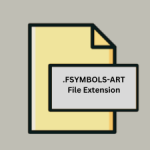.J2K File Extension

JPEG 2000 Image
| Developer | Joint Photographic Experts Group |
| Popularity | |
| Category | Raster Image Files |
| Format | .J2K |
| Cross Platform | Update Soon |
What is an J2K file?
The ‘.J2K’ file extension is associated with JPEG 2000, an advanced image compression standard designed to offer higher efficiency and better image quality compared to its predecessor, JPEG.
JPEG 2000 utilizes wavelet-based compression, allowing for scalable and efficient compression of both grayscale and color images.
More Information.
The development of JPEG 2000 aimed to provide a more flexible and efficient compression solution for various applications, including medical imaging, satellite imagery, digital cinema, and archival of high-quality images.
Its design focused on delivering superior image quality at multiple bit rates and scalability options, which made it suitable for both low-bandwidth internet applications and high-resolution imaging.
Origin Of This File.
JPEG 2000 was developed by the Joint Photographic Experts Group (JPEG), the same committee that created the original JPEG format.
It was introduced in the early 2000s as an improvement over the traditional JPEG format, aiming to address limitations such as compression artifacts and scalability.
File Structure Technical Specification.
JPEG 2000 files (.J2K) consist of multiple parts, including the codestream and optional metadata. The codestream is the compressed representation of the image data using wavelet transformation, allowing for efficient encoding and decoding.
Metadata can include information about the image itself, such as color space, resolution, and copyright details, stored in XML format within the file.
Technically, JPEG 2000 supports lossless and lossy compression modes, where lossless compression maintains image fidelity without any data loss, while lossy compression sacrifices some detail for higher compression ratios.
This flexibility makes it suitable for a wide range of applications where both image quality and file size are critical factors.
How to Convert the File?
Converting .J2K files to other formats like JPEG or PNG can be done using various software tools:
- Online Converters: Websites like Zamzar or Online-Convert allow uploading .J2K files for conversion to common formats.
- Image Editing Software: Programs like Adobe Photoshop, GIMP, or XnView support opening .J2K files and exporting them to different formats.
- Command Line Tools: Tools like ImageMagick offer command-line interfaces for batch conversion of .J2K files.
Advantages And Disadvantages.
Advantages:
- Superior Image Quality: JPEG 2000 often provides better image quality compared to JPEG at the same compression ratios.
- Scalability: It supports both lossless and lossy compression with multiple resolution levels, allowing for efficient storage and transmission of images.
- Support for Transparency: Unlike JPEG, JPEG 2000 supports alpha channels for transparency, making it ideal for applications requiring image overlays and transparency effects.
- Robustness: Its structure allows for efficient error resilience and recovery, important for applications where data integrity is crucial.
Disadvantages:
- Compatibility: While widely supported, not all software and web browsers natively support JPEG 2000, potentially requiring additional plugins or converters.
- Complexity: Encoding and decoding JPEG 2000 files can be more computationally intensive compared to JPEG, which may affect performance on older or less powerful devices.
- File Size: Depending on the compression settings, JPEG 2000 files can sometimes be larger than equivalent JPEG files, especially in lossless mode.
How to Open J2K?
Open In Windows
- Use image viewers like Windows Photos, Adobe Photoshop, or XnView.
- Install plugins or codecs if necessary for full compatibility.
Open In Linux
- Image viewers like GIMP, XnView, or specialized packages from the Linux repositories that support JPEG 2000.
Open In MAC
- Preview and Photos apps natively support JPEG 2000.
- Use Adobe Photoshop or other image editing software for advanced editing.













